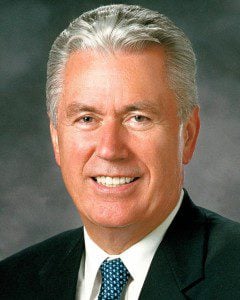“You hold in your hands a vital mission tool!” proclaims the foreword of the Community of Christ’s new hymnal, Community of Christ Sings—the first comprehensive hymnal issued by the church since 1981. This new worship resource contains 664 hymns, responses, chants, and praise songs; half of these songs have never appeared in the church’s past hymnals. Perhaps the most consequential part of Community of Christ Sings lies in its “core repertoire,” or more than 100 specially selected songs that are translated into English, French, and Spanish within the hymnal. Why the need for this common core repertoire? In the past generation, the Community of Christ has so firmly embraced its international diversity that, in some areas, the local has been the overriding norm that decided theology, music, and even the functions and types of ecclesiastical offices present in a congregation. Consequently, any shared, common songs are almost nonexistent between, say, Gumaguda, India and Manihi, French Polynesia. The new hymnal is one of several recent initiatives that attempt to articulate a common “global mission” for the Community of Christ. According to the hymnal committee, “the vision for this [core] repertoire is simple: when worshiping within Community of Christ, we will be able to share and sing these songs together, whether we are physically in the same place or across the globe from one another.” In short, Community of Christ Sings stands as an attempt to reknit together parts that are rapidly moving away from one another.
What are the songs that form the core repertoire, and what do they say about the Community of Christ’s global mission as envisioned by its leaders? Perhaps predictably, the hymnal draws upon resources from many Christian traditions, emphasizing the church’s ecumenical identity. There are eighteenth and nineteenth-century Anglophone Protestant classics, like “Amazing Grace,” “Come Thou Fount of Every Blessing,” and “All Creatures of Our God and King”. There are older evangelically-influenced songs, too, like “Seek Ye First” and “I Have Decided to Follow Jesus.” And, there are hymns and chants from the modern-day Taize community, a small but deeply influential ecumenical monastic community in France composed of Catholic, Orthodox, and Protestant brothers. With these selections, the core repertoire reflects how the Community of Christ has always drawn far more of its hymnody from its Christian neighbors than its LDS cousins have. But it also reveals which Christian allies the Community of Christ in North America has chosen in the last 50 years—namely, “mainline Protestants” such as United Methodists, Episcopalians, and liberal Presbyterians (PCUSA). For instance, all of the hymns and chants that I have named above could (and do) find themselves in the UMC’s The Faith We Sing and the United Methodist Hymnal.
This is not to say that the Community of Christ’s classical “Restoration” identity has faded from the new hymnal. Old Kirtland and Nauvo-era classics make appearances in the core repertoire, including “The Spirit of God Like a Fire is Burning,” “Redeemer of Israel,” and “We Thank Thee O God for Our Prophets.” RLDS classics also are included like “There’s an Old, Old Path,” a beloved hymn composed by two of Emma and Joseph Smith’s granddaughters, as well as “Great and Marvelous Are Thy Works,” a hymn that paraphrases lines from I Nephi in the Book of Mormon. The inclusion of these hymns, along with a liberal mix from the progressive Protestants, reflects a neo-Restorationist theology as much as it does a neo-Protestant theology that is alive and well within the Community of Christ. The so-called “moderate Mormon” identity that historian Roger Launius felt was dying twenty years ago surprisingly seems to have perdured; the Community of Christ is still neither “fully Protestant nor fully Mormon”. [1]
Perhaps the most interesting part of the core repertoire reflects the international composition of the Community of Christ and the theologies of those various communities. [2] For instance, approximately one fourth of the members in the Community of Christ live in an African nation, and hymns in Gullah, Swahili, Xhosa, Yoruba, and Zulu (each with English, French, and Spanish translations) were selected for the core repertoire. These hymns have a much more Protestant flavor to them, reflecting the more distant way that North American Restorationism influences African Community of Christ members. However, when one reads the words to the Tahitian hymn in the core repertoire, “Tiona Nehenehe,” one hears a clear articulation of nineteenth-century RLDS theology in a Tahitian register. “Zion the beautiful, beloved homeland, saints in these days. Jesus will return, we will all go to Zion and we will all meet him there in Zion, the pure in heart.” [3] And here, we can make another observation: If the Community of Christ as a whole is neither fully Protestant nor fully Mormon, the constituent parts of the international Community of Christ seem much more oriented to one or the other of those poles.
The new hymnal’s core repertoire appears at a moment when the global Community of Christ is deeply divided over human sexuality. For example, Tahitian members tend to accept full LGBT inclusion in priesthood and sacraments. American members seem to have embraced it as well. However, members in the Democratic Republic of the Congo seriously worry about fellow church members in other countries who accept such practices. Aware of this, the Community of Christ’s international leaders have tried to hammer out ways that allow for continuing communion with one another despite real differences. They’ve done this by conducting “listening circles” within congregations to hear divergent opinions, formulating “enduring principles” that make room for an enculturated gospel, and holding national conferences that address localized policies on human sexuality that do not apply to all jurisdictions within the church. As they know, all of this may still not counteract the centrifugal forces that have rent other international communions over human sexuality. [4] And, beyond social issues (or perhaps because of them), the “denomination” as a form of ecclesiastical organization is not faring well in general these days. Still, the Community of Christ’s leaders and many of its members are hoping, praying, and singing of their faith in a common future. To quote part of their new verse to the old favorite, “The Spirit of God Like a Fire is Burning,” it’s a future where they pray, “With one heart and mind, may the Lord call us Zion: a people of justice with God’s love inspired!” [5]
[1] Roger D. Launius, “‘Neither Mormons nor Protestant’: The Reorganized Church and the Challenge of Identity,” in Mormon Identities in Transition, ed. Douglas J. Davies (New York: Cassell, 1996), 52–60.
[2] Fully half of the 200,000 members of the Community of Christ live outside of North America, including 50,000 in Africa, 20,000 in India, 10,000 in Haiti, and 10,000 in French Polynesia.
[3] “Tiona Nehenehe,” (No. 382) in Community of Christ Sings (Independence, Missouri: Herald House, 2013).
[4] For instance, having a common ecclesiastical order, a Book of Common Prayer, a well-developed group identity, etc., has not kept the Anglican communion from serious schisms over human sexuality.
[5] “The Spirit of God Like a Fire is Burning,” (No. 384) in Community of Christ Sings.











